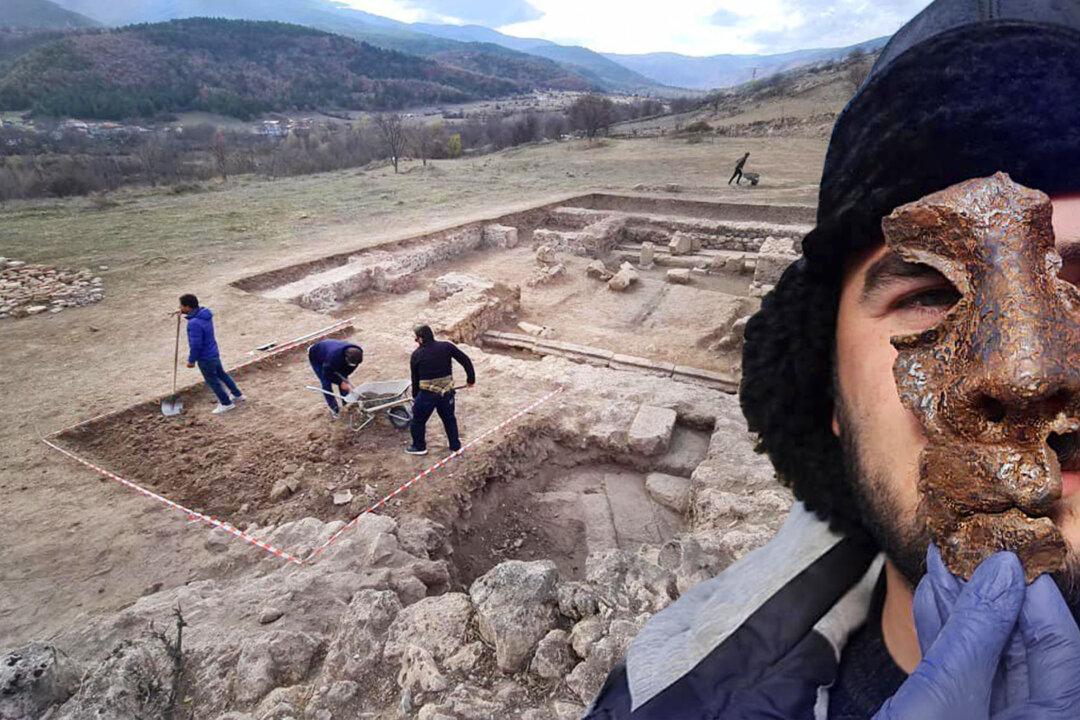Turkish archaeologists have unearthed evidence of an imperial Roman garrison in the ancient city of Hadrianopolis, near modern-day Eskipazar in the northern Turkish province of Karabük, producing a fragment of an iron mask believed to have been worn by cavalry in the Roman army some 1,800 years ago.
Excavation of the ancient city of Hadrianopolis, begun in 2003, has uncovered 14 distinct structures—including two church structures; two baths; rock tombs; a theater; an arched, domed structure; city walls; villas; a monumental niche and other monumental buildings; and the squared, defensive structure in which the mask was found.






